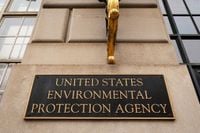The American energy and automotive sectors are undergoing a dramatic transformation in 2025 as the Trump administration’s sweeping regulatory rollbacks upend years of climate and clean energy policy. From the White House to Wall Street, and from Detroit’s auto plants to California’s solar fields, the effects of these changes are rippling across the economy, prompting both alarm and strategic adaptation among investors, environmentalists, business leaders, and policymakers.
At the core of this seismic shift is a series of executive orders and regulatory reversals that prioritize fossil fuel production and dismantle the legal and financial scaffolding that once bolstered renewable energy and emissions reduction efforts. According to reporting by AINVEST, the Trump administration’s 2025 orders—such as “Unleashing American Energy”—have eliminated the federal electric vehicle (EV) mandate, repealed Biden-era carbon pollution standards that required 90% carbon capture for coal plants, and revoked the Mercury and Air Toxics Standards, reverting regulations to more lenient 2012 rules. The administration has also streamlined National Environmental Policy Act (NEPA) reviews, slashing environmental review timelines by up to 70% to fast-track fossil fuel projects.
For the renewable energy sector, these rollbacks are not just symbolic. The cancellation of the $7 billion Solar for All program has left community solar developers scrambling for alternative funding. The Environmental Protection Agency’s (EPA) reevaluation of greenhouse gas regulations has cast uncertainty on long-term carbon pricing mechanisms, making the financial models underpinning clean energy projects suddenly much riskier.
“The potential health and environmental risks of eliminating all greenhouse gas emissions regulations for motor vehicles and engines, basically increasing CO2 emissions, could have a variety of potentially adverse impacts on our environment,” warned Masahi Kitazawa, professor of environmental and occupational health at the University of California, Irvine, in comments to EarthDay.Org. Kitazawa pointed to the likelihood of more extreme weather, heat waves, and threats to marine ecosystems as CO2 emissions rise.
The administration’s deregulatory push doesn’t stop at energy. On August 21, 2025, the White House expanded its 50 percent steel and aluminum tariffs to include more than 400 types of products, including parts and materials crucial to the auto industry, as reported by Automotive News. Automakers—especially the Detroit 3—are now leaning heavily on pickup and SUV sales, as well as Corporate Average Fuel Economy (CAFE) savings, to offset what they call “extreme” tariff costs.
Meanwhile, the Trump administration’s efforts to rescind the 2009 Endangerment Finding—an Obama-era policy that classified greenhouse gases as harmful pollutants under the Clean Air Act—have sparked fierce debate. Kathleen Rogers, president of Washington-based EarthDay.Org, explained, “This granted the EPA authority to regulate them under the Clean Air Act.” EPA Administrator Lee Zeldin described the rollback as “the largest deregulatory action in the history of America,” claiming it would save $54 billion annually for businesses and consumers.
But environmental groups and public health advocates see a much darker side to these changes. “The public health consequences will be immediate, widespread and devastating,” said Michelle Roos, executive director of the Environmental Protection Network, in an interview with EarthDay.Org. Rogers added that the deregulation “will impact public health via reduced air quality as well as heat waves and other extreme weather,” and warned that more destructive storms and droughts would drive up prices for food, raw materials, and insurance premiums. “Everyone will be forced to pay, whether it be with their health or their wallets,” she said.
Legal challenges are now mounting. Nonprofits and state attorneys general are preparing to contest the revocation of Solar for All grants and the rollback of greenhouse gas regulations. The outcomes of these cases could determine whether federal support for renewables is restored—or whether the new pro-fossil fuel paradigm becomes entrenched.
In the investment world, the response has been swift and strategic. Many investors are divesting from assets that are politically exposed to federal grants or tax credits, fearing that these incentives could be rescinded at any moment. Instead, they are pivoting to utility-scale solar and wind projects, which rely more on long-term power purchase agreements than on federal support. Companies like NextEra Energy and Brookfield Renewable Partners have seen a surge in institutional interest, according to AINVEST.
There’s also a growing trend toward diversification into adjacent clean technologies. Energy storage, hydrogen, and circular economy solutions are emerging as less politically sensitive sectors. Plug Power and Bloom Energy, for instance, are attracting attention from investors seeking to hedge against a resurgence of fossil fuels. At the same time, state-level policies are creating pockets of opportunity: while federal support wanes, states like California and New York are doubling down on clean energy targets. Investors are capitalizing on these state-specific incentives, such as New York’s Climate Leadership and Community Equity Program.
To navigate the new risks, investors are employing a range of financial instruments. Protective puts and collar options are being used to guard against downside risks in renewable equities. Real estate investment trusts (REITs) and infrastructure funds offer inflation protection and stable cash flows, while natural gas futures and nuclear energy equities are gaining favor as regulators ease export restrictions. Forward contracts are also being used to hedge against the dollar’s depreciation, which raises import costs for solar panels and raw materials.
Yet the story isn’t simply one of retreat. Some see opportunity amid the chaos. The administration’s push for liquefied natural gas (LNG) exports and domestic critical mineral supply chains is creating new avenues for investors in mineral extraction and refining. Companies such as Coeur Mining are benefiting from this shift, as reported by AINVEST.
Politically, the rollback of environmental regulations has been welcomed by many within the energy industry and among conservative policymakers. The American Petroleum Institute, American Energy Institute, and American Energy Alliance have all praised the moves. “The era of weaponizing environmental policy against American workers is over,” said Senator Cynthia Lummis of Wyoming. The Heritage Foundation, whose Project 2025 policy recommendations have shaped much of the Trump administration’s approach, argues that the effects of climate change “are vastly overstated” and that deregulation will ensure consumer choice and affordability.
On the other side of the spectrum, climate advocates and many scientists remain deeply concerned. They argue that the rollbacks will accelerate climate change, undermine U.S. leadership in renewables, and have dire consequences for public health and the economy. A Climate Power analysis found that oil and gas interests spent $450 million supporting Trump during the 2024 presidential election, fueling criticism that the administration’s policies are a payback to fossil fuel donors.
As legal battles loom and the regulatory landscape remains in flux, investors and businesses are being urged to prioritize resilience over short-term gains. The renewable energy sector’s future, many say, will depend not on political whims but on market-driven innovation and robust infrastructure. For now, those who adapt quickly and hedge wisely may be best positioned to weather the storm—and perhaps even thrive—when the policy pendulum inevitably swings once again.






